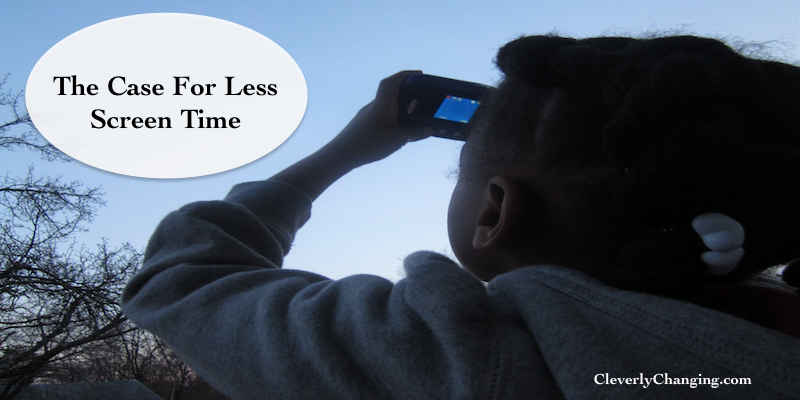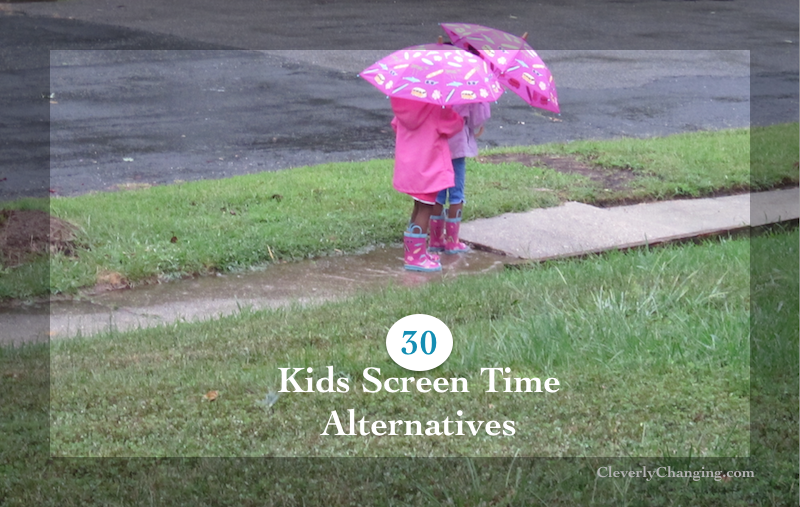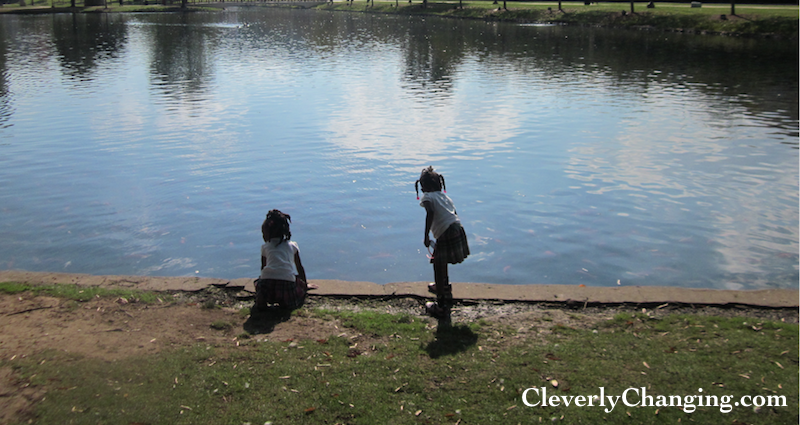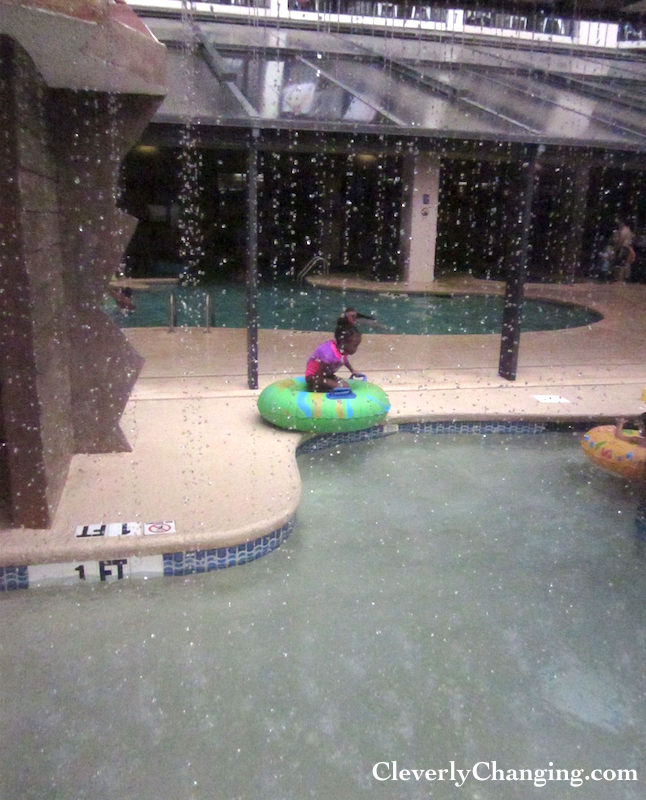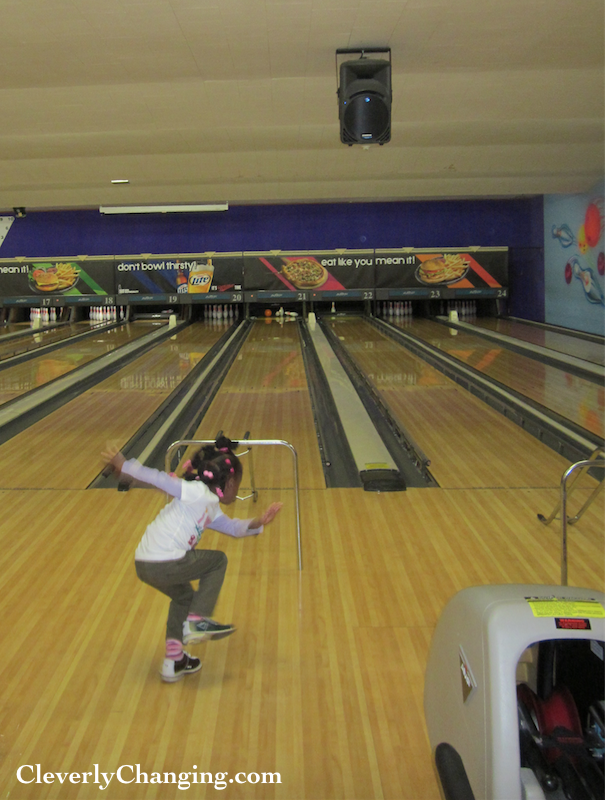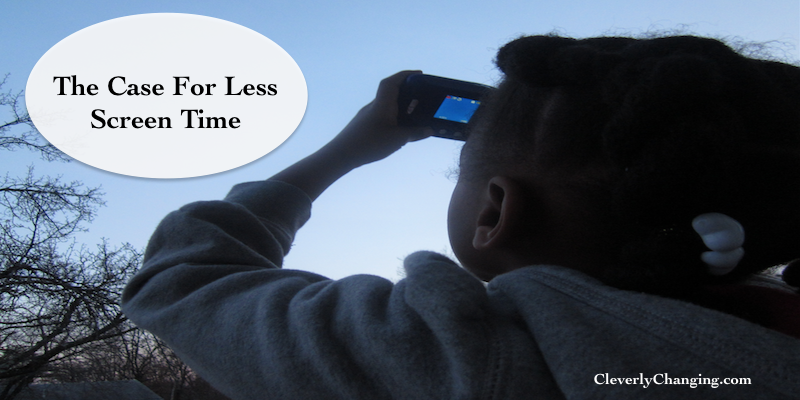We are clearly living in the age of technology where gizmos, gadgets, and widgets are able to electronically stimulate our world with the push of a button, We are all learning how to best integrate normal everyday activities with apps, computers, TVs and digital toys so that we benefit instead of over stimulating our nervous systems. I have shared several post about my own experiences with seeing my children changed by lessening their screen time such as:
- Use apps to build confidence and reiterate concepts
- Technology and our kids: How Plugged-in are they?
- Mom Vs. TV: Which programs are right for your child?
Instead of banning all TV, all apps, computers, etc., I allow my daughters to use these devices in moderation. Why do I feel so strongly about not letting my girls play with apps for hours and hours? I believe a lot of the screen time that children engage in are often one-sided and it takes away from them using their own imaginations to learn and explore. The American Academy Of Pediatrics Just Changed Their Guidelines On Kids And Screen Time; however, they encourage more interactive educational screen time than just video game playing or watching TV shows.
Since we have made the rule of no more than 2 hours a day with digital interaction in our home. Our daughters live are much more enriched. I have also learned so much about my daughters’ preferences, learning styles, and personalities. Instead of electronics some of our favorite activities are:
- Puzzles; especially 3D puzzles
- Lego bricks
- K’nex toys
- Drawing
- Writing poems, stories, songs
- Biking
- Croquet
- Tennis
- Playing basket ball
- Roller blading
- Going on nature walks
- Bird watching
- Creating Puppet shows
- Cooking
- Playing instruments
- Taking pictures
- Reading
- Working on Science experiments
- Exploring outside
- Splashing in water puddles
- Dancing
- Rock Climbing
- Playing at the Park
- Clay Sculpting
- Horse Back Riding
- Soccor
- Kick Ball
- Water Balloon Toss
- Relay races
- Gymastics
And many more.
Overall electronic media is not bad for children, but interpersonal human interaction and learning is better. Hands on learning with touch, sound, taste, smell are better than trying to experience these senses through second-hand digital manipulation. If the child is not getting the personal interaction that is educationally stimulating and exposes him or her to new words, thoughts, and lessons, the next best thing is to use is educational media to supplement the child’s learning. The American Academy of Pediatrics report Growing Up Digital states:
Panelists emphasized that developmentally optimized media can be beneficial for young children, and is a prov-en learning tool for children over age two. It may play a key role in bridging the learning “achievement gap” noted among low-income, disadvantaged, and underserved populations. Digital media can be used to facilitate executive function, build self-control and problem-solving skills, and improve children’s ability to follow directions.
Doctors want children to be moving jumping, laughing, playing, running, etc., instead of swiping and scrolling. In my opinion, the best case for less screen time, is to not let your child’s media play interfere or take time away from real life play.
Kid’s Screen Time Infographic
From Cassie Knill, MA, CCC-SLP, supervisor of the Sharp Rees-Stealy Pediatric Rehabilitation and Speech Pathology Unit (Source)


